2006
2006 Disneyland 1-Day price: $63
Today’s equivalent: $85
Disney World 1-Day price: $67
Today’s equivalent: $90
There’s no doubt that Disney Parks sticker prices and their modern equivalents have been on slowly accelerating since the ‘50s. On the previous page, we purposefully and sneakily selected years to roughly track $10 increases in Disneyland 1-Day tickets. What’s interesting is how the length of time that passed between $10 touchpoints slowly decreased from 7 years (1982 to 1989) to 6 years (1989 to 1995), then 5 years (1996 to 2001), and then 4 years (2001 to 2005). But pretty unbelievably, the next $10 price jump took just one. During the annual price hike between 2005 and 2006, the price of a 1-Day ticket to Disneyland jumped $10, or nearly 20%!
In 2006, the price of a 1-Day Ticket cost $63 – worth about $85 in today’s terms.
An equivalent ticket at Walt Disney World cost $67 – itself a $7.25 premium over 2005’s pricing.
Consider it further evidence that after 2005’s “Homecoming” campaign, Disney Parks’ decade-long slump was over, and the race to today’s “lifestyling” parks filled with upcharges, Annual Passholders, and astronomical admission prices was on…
2013
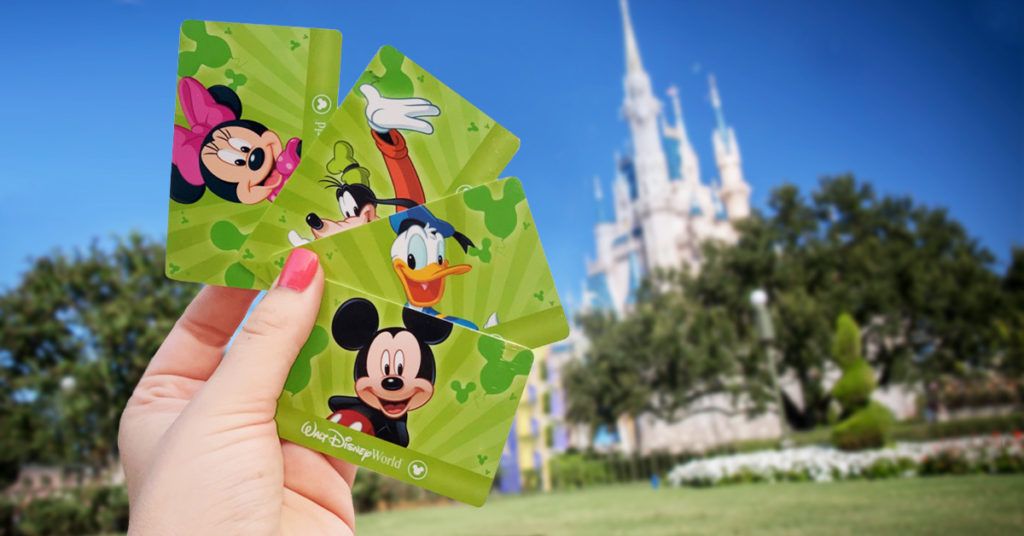
Disneyland 2013 1-Day price: $92
Today’s equivalent: $108
Disney World 2013 1-Day price: $94 (Magic Kingdom) | $89 (other parks)
Today’s equivalent: $110 | $104
Continuing the astronomical rise post-2005, by 2013 both Disneyland and Walt Disney World were charging just over twice the price they’d commanded just ten years earlier. Doubling in a decade might be enough to make some folks begin to sweat… or at least to reduce their trips from annual to every other year…
At least at Disneyland, that coincided with the first full year after Disney’s five-year, billion-dollar reimagining of Disney California Adventure, debuting both Buena Vista Street and Cars Land. Finally a fitting counterpart and complement to Disneyland, admission to the reborn park for a single day would set guests back $92 – the equivalent of $108 in terms of today’s spending power.
At Walt Disney World, meanwhile, 2013 saw the first steps toward the technological transformation we chronicled in a full standalone Special Feature for Members – MyMagic+. Paper tickets of old were replaced with tickets containing RFID chips while MagicBands made their illustrious debut.
At the same time, the Florida resort launched an unusual stratefication in ticket prices. For the first time, a 1-Day ticket to Magic Kingdom cost more ($94) than a 1-Day ticket to Epcot, Disney’s Hollywood Studios, or Disney’s Animal Kingdom ($89). Obviously Magic Kingdom’s ride count and iconic status explain why. Still, this differentiation applied only to 1-Day, 1-Park tickets – in essense, a “tax” on travelers and conventioneers who wanted to drop into the resort’s original and most iconic park.
2017
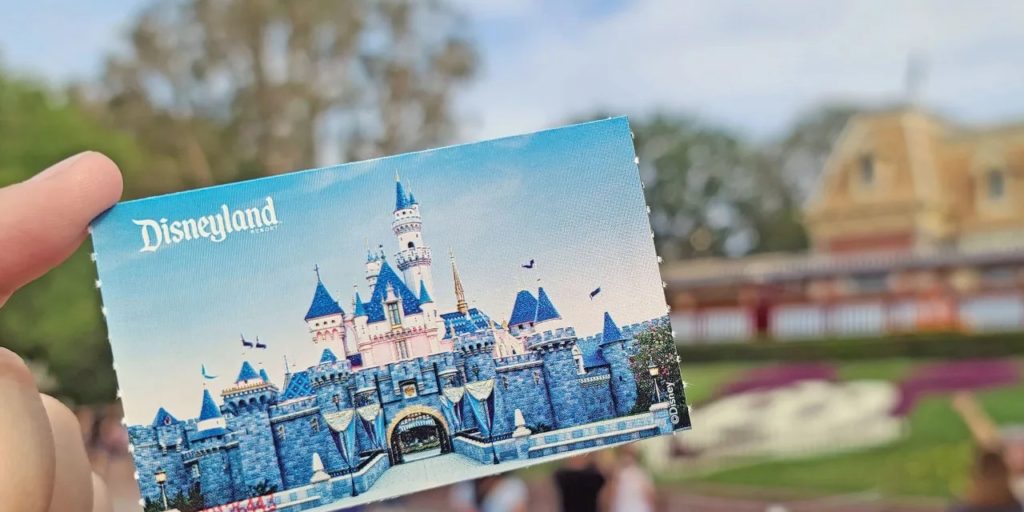
2017 Disneyland 1-Day price: $110
2017 Disney World 1-Day price: $105 | $110 | $124
In the five years between 2013 and 2017, Disneyland’s 1-Day ticket price jumped $18. (Disneyland officially broke the $100 sticker price in 2016 when a 1-Day, 1-Park ticket was raised from $99 to $105 overnight.)
This is also the first year that Disney World launched variable pricing based not on parks, but on demand. 1-Day, 1-Park tickets were split into “Value,” “Regular,” and “Peak” pricing based on expected crowd levels, theoretically incentivizing visits during less busy seasons. That said, this demand-based pricing applied only to 1-Day, 1-Park tickets; all multi-day tickets were priced evenly across the year regardless of the days or time of year used, which again seems like a major oversight if crowd control was indeed the point.
In 2017, Disney officially dropped “Magic Your Way” as a brand for their ticketing system, but the basis of the scheme is still in effect: guests select a number of days from 1 to 10 (or longer for international guests), then can add on “Park Hopper,” “Water Park and Sports,” or the “Park Hopper Plus” option that includes it all. (The “No Expiration” add-on was discontinued in 2004, making us wish we’d stocked up on $55 tickets when we could’ve.)
2018
2018 Disneyland prices: $97 | $117 | $135
2018 Disney World 1-Day prices: $109 | $114 | $122 | $129
For the first time, in 2018 Disneyland joined Walt Disney World in switching to demand-based pricing, but again, only on 1-Day tickets. Prices were stratefied across three tiers based on anticipated attendance. Interestingly, “Value” days in 2018 cost $97 – $13 less than a 1-Day ticket the year prior! Of course, that was more than made up for by “Regular” and “Peak” day pricing, which represented $7 and $25 increases over 2017 tickets, respectively.
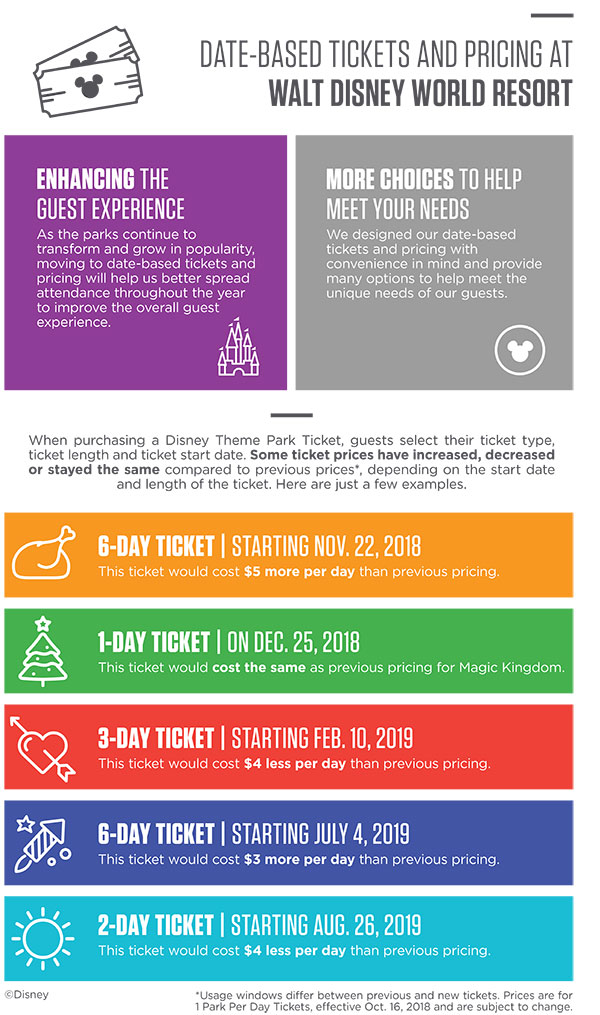
Disney World’s 1-Day tickets, meanwhile, continued further experimentation with tiered, demand-based pricing. “Low” season pricing (which itself represented a $4 increase over 2017’s “Value”) joined “Value,” “Regular,” and “Peak,” creating four tiers.
Beginning in 2018, Disney World’s multi-day tickets also varied in price based on the first day of its 14-day validity period, which seemed like an odd thing to omit from demand-based pricing in 2017 anyway. Coinciding with the launch of an “improved” My Disney Experience, 2018 saw ticket purchasing transformed into just one step in a multi-phase vacation planning portal.
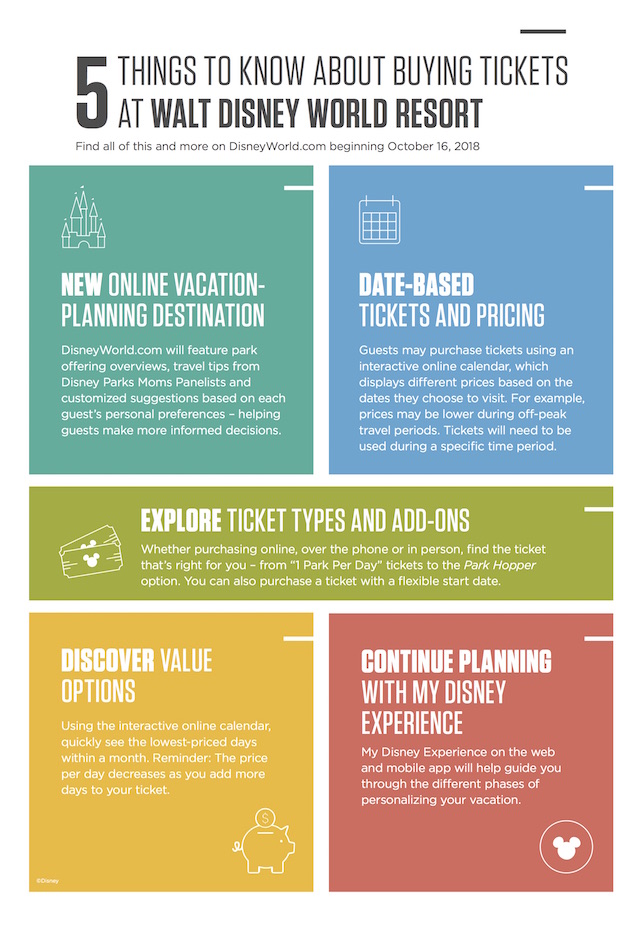
With variable pricing in effect at both resorts, 2018 raised a very interesting question: what does it cost to go to Disneyland or Disney World? I mean, what does it really cost? Newspapers deliciously chomped at the highest price points, while Disney-defenders on social media trumpeted the lowest. So what was the cost of a single day at Disneyland or Magic Kingdom? For the first time since ticket books were retired in 1982, the answer was: it depends…
2021
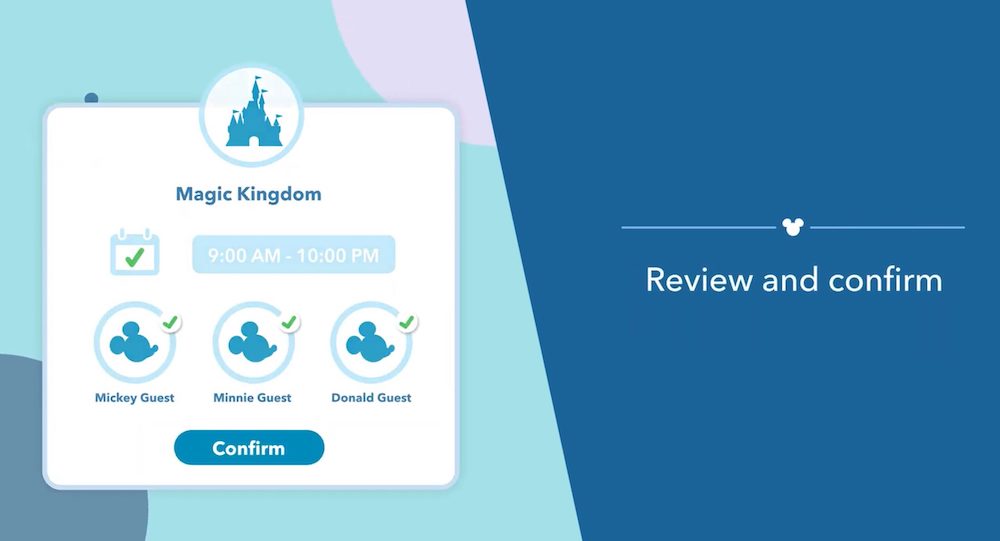
2021 Disneyland 1-Day prices (1): $104 | $114 | $124 | $139 | $154
2021 Disneyland 1-Day prices (2): $104 | $119 | $134 | $149 | $159 | $164
2021 Disney World 1-Day prices: $109 – $150
Disneyland began 2021 with five single-day pricing tiers, but on October 25, switched to six with only the most low-cost “Value” day remaining the same. Disney World, meanwhile – ever a few steps ahead of its Californian sister – has long abandoned discrete “tiers,” opting instead for fully fluid pricing based the first day of validity.
Of course, admission price changes are only a part of the story of Disney Parks in 2021, which look a whole lot different than even a few years earlier. The COVID-19 pandemic rewrote the rules of ticketing, capacity, and operations at Disney Parks across the globe. Not only are single and multi-day tickets tiered by demand, but a Park Pass reservation system is also in effect. That means you must have both a ticket valid at and a reservation for any U.S. Disney park for the date you plan to visit (as well as other scheduling oddities, like Park Hopping restricted to after 2 PM).
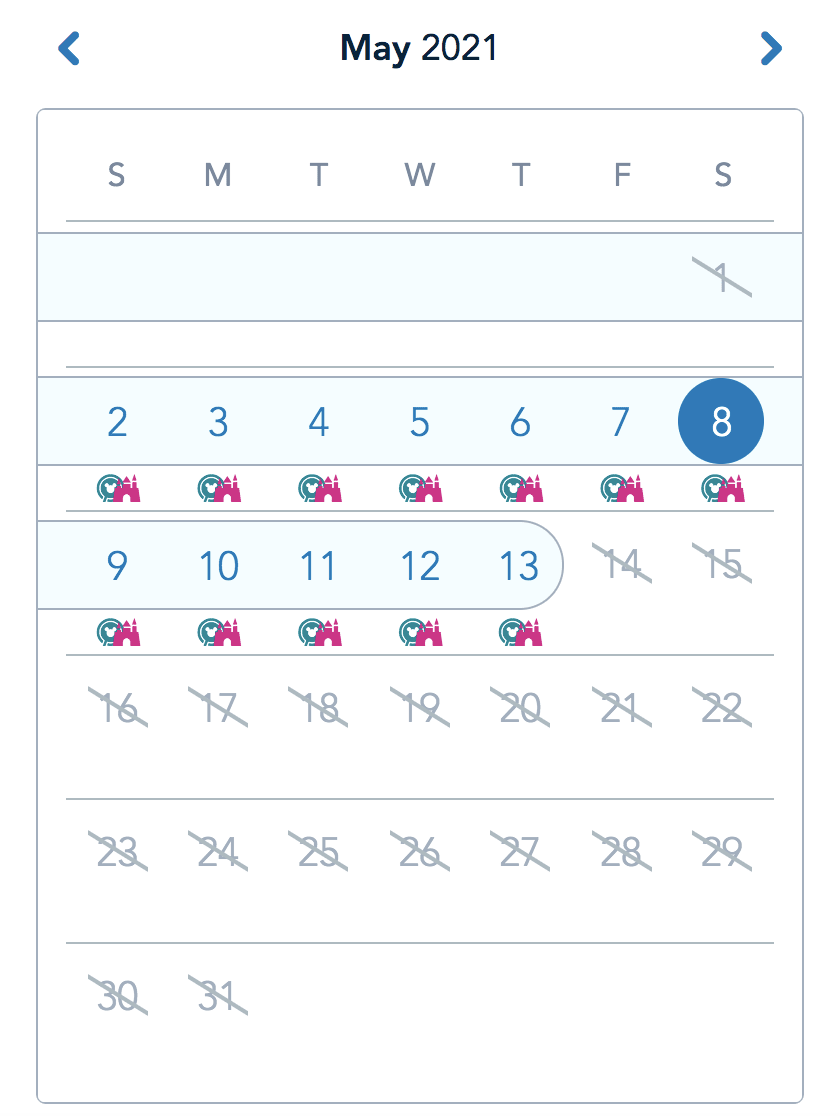
Much to the ire of fans, CEO Bob Chapek expressly indicated that that Park Pass reservation system will outlive other pandemic precautions. It makes good business sense, given that it provides Disney a to-the-individual guest count for each park on each day. On the optimistic side, that provides Disney with data about when specific parks are in demand, allowing parks to be appropriately staffed. Of course, the Park Pass system can also be a nefarious tool for limiting Cast Member shifts, cutting hours, and restricting entertainment and dining options when Park Passes indicate less attendance at a particular park.
No doubt bolstered by the pandemic and the ongoing need to distribute and track crowds, Disney has officially committed to demand-based pricing in a big way for both single and multi-day tickets. Pricing based on predicted attendance is simply the way forward.
In some ways, the system is a “win-win” for day guests and for Disney. For day guests, demand-based pricing theoretically helps to more evenly distribute crowds throughout the year. Saving a few hundred dollars actually may be incentive enough to convince families to visit on to a lower-tier week with lower-cost tickets and lower-cost hotels. So even though locals mourn the outright extinction of the long-lost “off-season” or the ability to drop in at a moment’s notice, demand-based pricing theoretically improves the experience on average throughout the whole year.
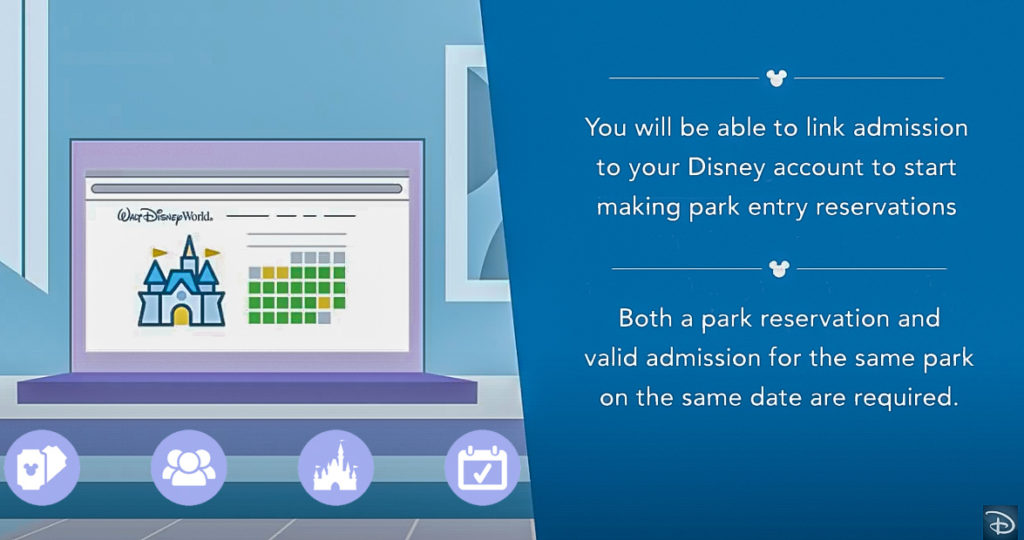
For Disney, the benefits are far more obvious. For one, guests who insist on visiting during holiday celebrations, summer, or winter breaks will (quite literally) pay for it. Pricing based on Disney’s expectations of demand also cleverly conceals the math, meaning Disney could arbitrarily decree “Peak” days whenever they want. More to the point, a calendar littered with seemingly-random dollar amounts means there is no set “cost” of a trip to Disneyland or Walt Disney World, so inching up ticket costs goes unseen by all but the most dedicated price-trackers. Higher prices may suddenly appear on select days, while the lowest prices merely stop appearing on the calendar.
2024
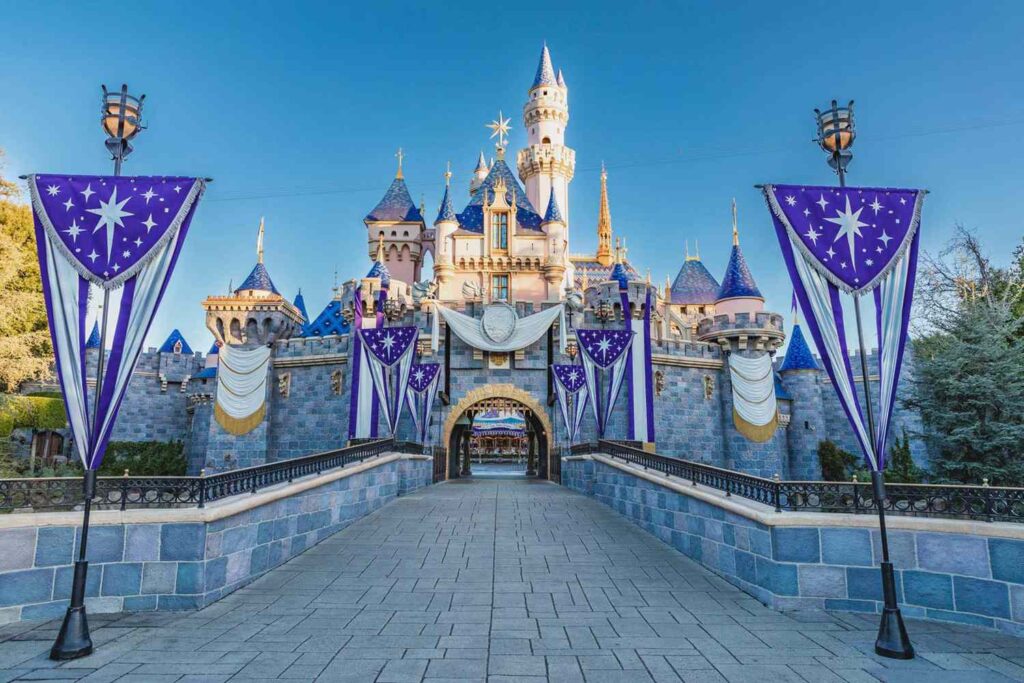
2023 Disneyland 1-Day prices: $104 | $119 | $134 | $154 | $169 | $189 | $194
2021 Disney World 1-Day prices: $109 – $189
Between 2021 and 2024, a whole lot has changed at The Walt Disney Company. Fan detested executive (and big fan of revenue optimization at ant cost) Bob Chapek was given his pink slip in November 2022, ushering in the return of the Prodigal CEO, Bob Iger. In 2023, Iger even spoke specifically about park pricing at a Morgan Stanley financial conference. “I think that in our zeal to grow profits, we may have been a little bit too aggressive about some of our pricing,” he said. “I think there’s a way to continue to grow our business but be smarter about how we price so that we maintain that brand value of accessibility.”
Easier said than done. After all, The Walt Disney Company finds itself in a tight spot. Having gone all-in on streaming, the company finds itself contending with the very real possibility that making streaming profitable may not ever be reliably revenue-generating. That’s a terrible realization to have right as the company’s once-golden-geese – Star Wars and Marvel – begin to tarnish, and as right wing culture wars select Disney as their villain du jour. With stocks swinging ever-downward, it’s really no surprise that Disney turned back to its reliable winner – the Parks.
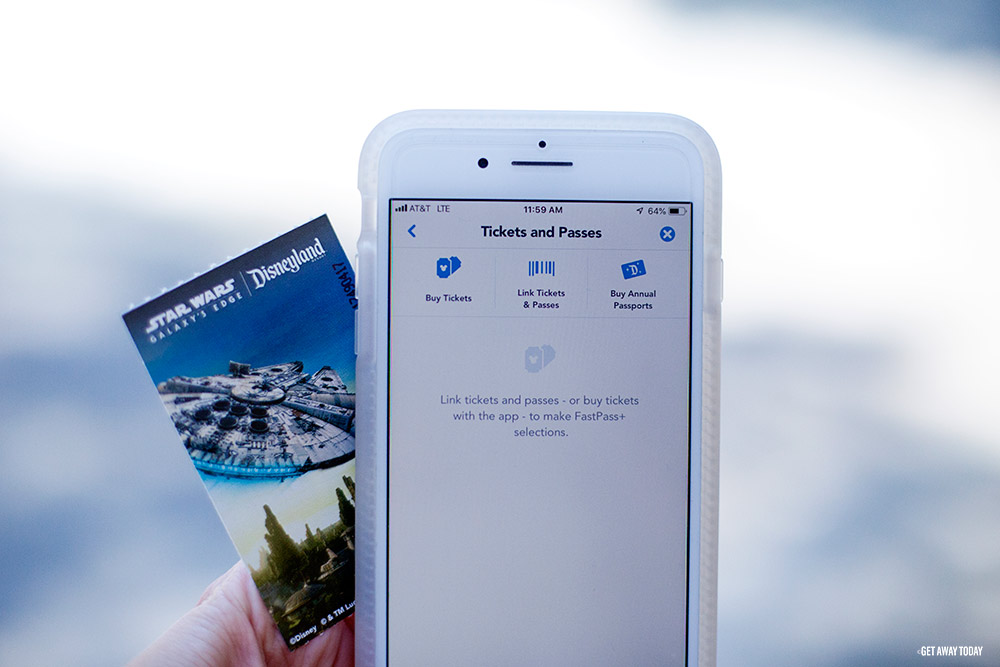
So not only does Iger look likely to keep slashing perks and installing new upcharges while continuing Chapek’s tradition of “cheap and cheerful,” IP-infused park additions that focus on retail over rides, but he also looks to be embracing Chapek’s “quiet part out loud” strategy of aiming for fewer guests – but richer ones – to visit the parks. Weeks after announcing in September 2023 that Disney was looking to double its spending on the parks in the next ten years versus the last (from $30 billion to $60 billion), we found out how they plan to make it happen. Surprisingly-brutal price increases swept across Disney Parks on October 11. Naturally, prices jumped on everything from parking (now $30) to Annual Passes. (To put things into perspective, the Disneyland Annual Pass that cost $499 in 2011 will now go for $1,649 just a dozen years later.)
Of course, not spared from the increase are single and multi-day tickets, which Micechat calculates are up between 4% and nearly 16% from just the year prior. A five-day ticket with Park Hopper at Disneyland will set you back $555, or $111 per day – making the days of “the longer you play, the less you pay per day” seeming to be a very distant memory. And lest we forget, that does not include paid-for Genie+ (now up to $30 per person per day; formerly, free FastPass). And maybe even more illustrative, the highest tier price in 2021 is now the middle tier price in 2024. And on the highest-demanded days, a one-day, one-park ticket to either Disneyland or Disney California Adventure will set you back an unimaginable $194, making it almost certain that within ten years of breaking through the $100 barrier in 2016, we’ll see a single day ticket to a Disney Park break $200.
It’s no surprise that such a radical rise in prices has left fans and the Internet proclaiming once again that they’ve been priced out and that they’ll never again return the Disney Parks. The question is, might they actually mean it this time?
Calmer heads
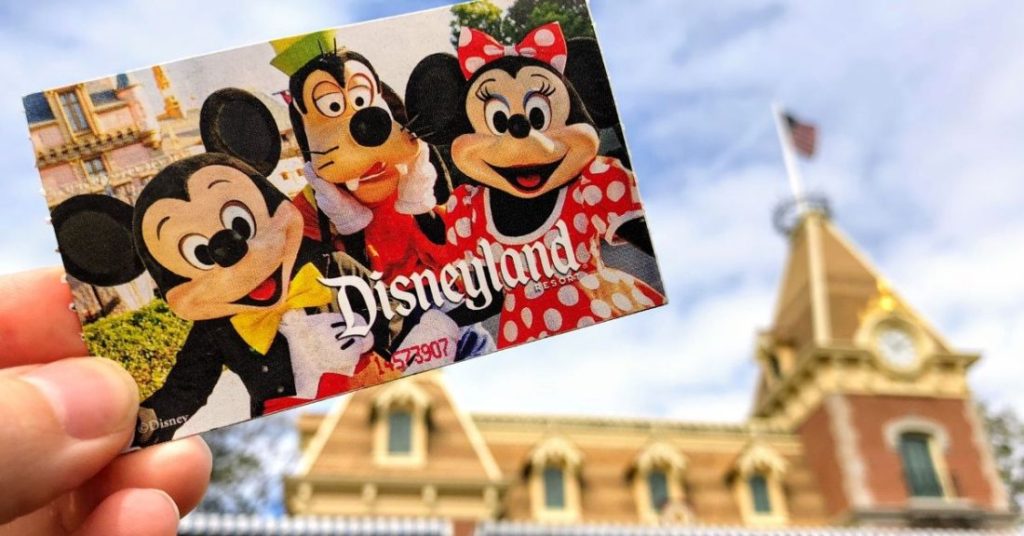
Let’s face it – Disneyland’s general admission going from $1.00 in 1955 to nearly $200 in the 2020s isn’t a good look. Every time prices are raised, headlines decry with great glee how expensive Disneyland and Disney World have become – $194 for a single day!
And don’t misunderstand: Disney Parks are a premium product, and the downright wild rise in ticket prices (quite literally doubling between 2010 and a peak day in 2023) is nothing if not… bold. Even the most fervent defenders of The Walt Disney Company would have to concede that the gargantuan jump in Disney Parks prices – even and especially after 2005 – has definitely been jaw-dropping. (It’s also been self-perpetuating. Do you really think if admission were half as much, the parks would be twice as crowded? Do prices really “have” to rise annually?)
But even if a 200x increase in Disney Parks admission (and that deliciously simple $1 start in 1955) over the last 66 years makes for great, sensationalized headlines and rage-baiting article fodder, the truth about the value of a day at a Disney Park is a little more complicated… Hopefully we can convince you that it’s not really as bad as it seems on the last page…



I love Disneyland – my Mom took my two brothers and myself there every year growing up – so much so that when I was old enough to work I wanted to work there as a guide thinking that I knew the park well enough. I did end up working at Disney later on in life. I worked at the warehouse located at the exit of the park working as a ticketer for the items sold in the park and at the mall selling merchandise being sold to tourists and fans of Disney. I loved working there.
Nope still not convinced lol prices do not need to be as high as they are.